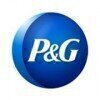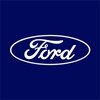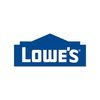Supply Chain Analyst
20+ Supply Chain Analyst Interview Questions and Answers

Asked in Procter & Gamble

Q. What would you do if a product launch is scheduled for today, a grand program has been prepared by higher officials, but the product is delayed and will only arrive in 3 days? How would you handle this situatio...
read moreI would communicate the delay to the higher officials, provide a detailed explanation, and offer solutions to mitigate the impact of the delay.
Immediately inform the higher officials about the delay in product arrival
Provide a detailed explanation of the reasons for the delay, such as transportation issues or supplier delays
Offer alternative solutions to mitigate the impact of the delay, such as rescheduling the launch event or finding temporary substitutes
Ensure clear commun...read more

Asked in Eshopbox Ecommerce

Q. Why are you switching from electrical engineering to supply chain analysis?
I am switching to supply chain analyst as it aligns better with my career goals and interests.
I have always been interested in the logistics and operations side of businesses
I have gained experience in data analysis and problem-solving through my electrical background
I see a lot of potential for growth and impact in the supply chain field
I am excited to apply my skills and knowledge to optimize supply chain processes and improve efficiency
Supply Chain Analyst Interview Questions and Answers for Freshers

Asked in WNS

Q. Whar are the algorithms used in forecasting. How best fit model works?
Forecasting algorithms include ARIMA, exponential smoothing, and machine learning models. Best fit model minimizes error between predicted and actual values.
Common forecasting algorithms include ARIMA, exponential smoothing, and machine learning models like random forests or neural networks
ARIMA (AutoRegressive Integrated Moving Average) is a popular time series forecasting method that takes into account past values and trends
Exponential smoothing assigns exponentially decrea...read more

Asked in Ata Freight Line

Q. How do you ensure that all stakeholders are informed of changes or delays in the supply chain?
Effective communication and proactive updates are key to keeping stakeholders informed about supply chain changes.
Establish a communication plan that outlines how and when updates will be shared with stakeholders.
Utilize project management tools like Trello or Asana to track changes and notify relevant parties.
Send regular status reports via email to keep stakeholders informed of any delays or changes.
Hold weekly or bi-weekly meetings to discuss supply chain performance and a...read more
Asked in Social For Local

Q. What is your level of knowledge and experience with Microsoft Excel?
I have advanced knowledge and extensive experience with Microsoft Excel.
Proficient in creating complex formulas and functions
Skilled in data analysis and visualization using pivot tables and charts
Experience with VLOOKUP, INDEX/MATCH, and conditional formatting
Familiar with macros and automation in Excel
Have used Excel for inventory management and supply chain optimization

Asked in Ginkgo Bioworks

Q. What are the steps when a customer notifies Ginkgo of a quality issue?
When a customer notifies Ginkgo of a quality issue, there are specific steps that need to be followed to address the issue effectively.
Acknowledge receipt of the quality issue notification from the customer.
Investigate the root cause of the quality issue to determine the source of the problem.
Implement corrective actions to address the quality issue and prevent it from recurring in the future.
Communicate the resolution of the quality issue to the customer and ensure their sat...read more
Supply Chain Analyst Jobs




Asked in Ford Motor

Q. General SCM process and your job role
SCM process involves planning, sourcing, making, delivering, and returning products. As a Supply Chain Analyst, my role is to optimize these processes.
My job involves analyzing data to identify areas for improvement in the SCM process
I work with cross-functional teams to develop and implement strategies to optimize the supply chain
I monitor key performance indicators (KPIs) to ensure that the supply chain is operating efficiently
I identify and mitigate risks in the supply cha...read more

Asked in Ata Freight Line

Q. Describe a time when you had to troubleshoot an issue in the supply chain process.
Resolved a supply chain disruption by analyzing data and collaborating with stakeholders to implement a corrective action plan.
Identified a delay in shipments due to a supplier's production issue, which was impacting our inventory levels.
Conducted a root cause analysis by reviewing historical data and communicating with the supplier to understand the problem.
Collaborated with the procurement team to identify alternative suppliers who could meet our urgent needs without compro...read more
Share interview questions and help millions of jobseekers 🌟

Asked in Dilip Motors

Q. What is the difference between specifications and features?
Specifications define the requirements of a product or service, while features are the characteristics or functionalities of the product or service.
Specifications outline the detailed description of what is required, such as dimensions, materials, and performance standards
Features refer to the unique qualities or capabilities of a product or service that differentiate it from others
Specifications are typically set by the customer or organization, while features are inherent t...read more

Asked in Ata Freight Line

Q. What experience do you have with supply chain management software?
I have extensive experience with various supply chain management software, optimizing processes and enhancing efficiency.
Proficient in SAP SCM for inventory management and demand forecasting.
Utilized Oracle SCM Cloud for end-to-end supply chain visibility.
Experience with JDA Software for optimizing logistics and transportation.
Implemented Microsoft Dynamics 365 for managing supplier relationships and procurement.

Asked in Lowe's

Q. What do you know about supply chain analytics?
Supply chain analytics involves using data and technology to optimize supply chain operations and improve decision-making.
Supply chain analytics involves collecting and analyzing data related to supply chain processes, such as inventory levels, transportation costs, and supplier performance.
It helps identify trends, patterns, and potential risks in the supply chain, allowing for better forecasting and planning.
By leveraging advanced analytics tools like predictive modeling an...read more

Asked in Lowe's

Q. What is your strategy to minimize cost?
My strategy to minimize cost would involve optimizing inventory levels, negotiating with suppliers for better pricing, and implementing efficient transportation routes.
Optimizing inventory levels to reduce carrying costs
Negotiating with suppliers for better pricing and terms
Implementing efficient transportation routes to reduce shipping costs

Asked in Yamaha Motor

Q. What is Single-Minute Exchange of Die (SMED)?
SMED is a methodology aimed at reducing setup times in manufacturing processes to improve efficiency and flexibility.
SMED stands for Single-Minute Exchange of Die, focusing on reducing setup time to under 10 minutes.
It involves separating internal setup (done when the machine is stopped) from external setup (done while the machine is running).
For example, a factory might prepare tools and materials while a machine is still operating, minimizing downtime.
Techniques include sta...read more

Asked in Eshopbox Ecommerce

Q. What is ecommerce and types
Ecommerce refers to buying and selling goods or services online.
B2B ecommerce involves businesses selling to other businesses
B2C ecommerce involves businesses selling to consumers
C2C ecommerce involves consumers selling to other consumers
Examples include Amazon, eBay, and Etsy

Asked in Yamaha Motor

Q. What lean tools are you familiar with?
I am familiar with several lean tools that enhance efficiency and reduce waste in supply chain processes.
5S: A method for organizing and managing the workspace effectively. Example: Sort, Set in order, Shine, Standardize, Sustain.
Value Stream Mapping: A visual tool to analyze the flow of materials and information. Example: Identifying bottlenecks in production.
Kaizen: A continuous improvement approach that encourages small, incremental changes. Example: Regular team meetings ...read more

Asked in Ecolabs

Q. What do you know about eQMS?
eQMS stands for Electronic Quality Management System which is a software solution to manage quality and compliance processes.
eQMS helps organizations to streamline their quality management processes
It provides a centralized platform to manage quality documents, audits, non-conformances, and corrective actions
eQMS ensures compliance with regulatory requirements and industry standards
It helps to improve product quality, reduce risks, and increase customer satisfaction
Examples o...read more

Asked in Eshopbox Ecommerce

Q. What is the difference between forward and reverse supply chains?
Reverse chain is the process of returning goods from customer to supplier while forward chain is the process of delivering goods from supplier to customer.
Reverse chain involves activities like returns management, refurbishing, and recycling.
Forward chain involves activities like procurement, production, and distribution.
Reverse chain is initiated by the customer while forward chain is initiated by the supplier.
Reverse chain is also known as the aftermarket supply chain.
Examp...read more
Asked in Codify Software Services

Q. Are you an end user of Power BI?
Power BI is a powerful analytics tool that transforms raw data into interactive visual insights for informed decision-making.
Data Visualization: I use Power BI to create interactive dashboards that visualize sales trends, helping stakeholders make data-driven decisions.
Data Modeling: I build data models in Power BI to connect various data sources, such as Excel and SQL databases, for comprehensive analysis.
Custom Reports: I design custom reports in Power BI to track key perfo...read more
Asked in Zita Telecom

Q. What is the notice period?
The notice period is the time between informing an employer of resignation and the last working day.
Typically ranges from 2 weeks to 3 months, depending on company policy.
Allows the employer to find a replacement and ensures a smooth transition.
Example: A 1-month notice period means you inform your employer 30 days before leaving.
Some roles, especially senior positions, may require longer notice periods.

Asked in Deloitte

Q. Explain your DILO.
DILO stands for Day In the Life Of. It is a method used to analyze and document the activities and tasks performed by an individual or a team.
DILO is a tool used in process improvement and workflow analysis.
It involves observing and recording the activities, tasks, and time spent by an individual or a team throughout a typical day.
The purpose of DILO is to identify inefficiencies, bottlenecks, and areas for improvement in the supply chain process.
DILO helps in understanding t...read more

Asked in Viraj Profiles

Q. What is international trade?
International trade refers to the exchange of goods and services between countries.
Involves importing and exporting goods and services across borders
Facilitates economic growth and development
Influenced by factors such as tariffs, trade agreements, and currency exchange rates
Examples include the export of automobiles from Japan to the United States, or the import of coffee from Brazil to Europe

Asked in Kraft Heinz Company

Q. What is an IDoc?
IDoc is an intermediate document used in SAP for data exchange between systems, facilitating seamless integration and communication.
Data Structure: IDocs consist of a control record, data records, and status records, allowing structured data transfer.
Types of IDocs: There are various types of IDocs, such as basic IDocs and extended IDocs, used for different purposes like order processing or invoice management.
Use Cases: IDocs are commonly used for EDI (Electronic Data Interch...read more

Asked in Flipkart

Q. What is a supply chain?
A supply chain is a network of organizations, people, activities, information, and resources involved in the creation and distribution of a product or service.
Involves suppliers, manufacturers, distributors, retailers, and customers
Focuses on the flow of goods, information, and finances
Aims to optimize efficiency, reduce costs, and meet customer demand
Examples: Amazon's supply chain for delivering products, pharmaceutical supply chain for distributing medications

Asked in Kraft Heinz Company

Q. Explain warehouse operations.
Warehouse operations involve the management of inventory, storage, and distribution to ensure efficient supply chain processes.
Receiving: Goods are received from suppliers, checked for quality and quantity, and then recorded in the inventory system.
Storage: Items are organized in designated areas, often using shelving or pallet racking systems to maximize space and accessibility.
Inventory Management: Regular audits and tracking systems (like RFID) are used to monitor stock le...read more
Interview Questions of Similar Designations
Interview Experiences of Popular Companies








Reviews
Interviews
Salaries
Users

















